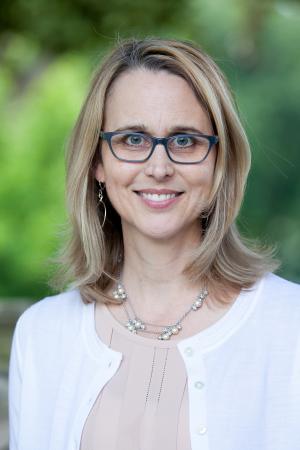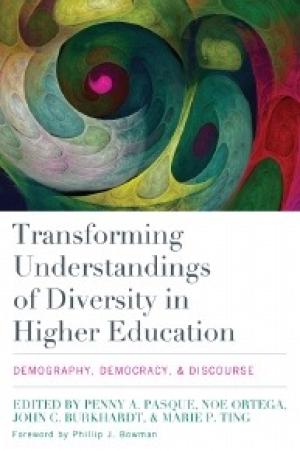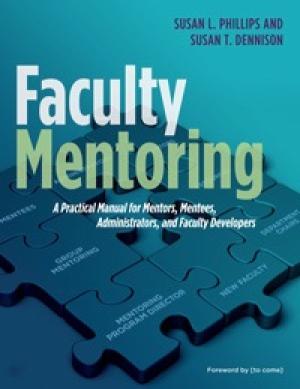Resources by Heather Hartung Vacek

I imagine that once upon a time, a child joyfully ran along the beach in this sandal - picking up shells, building sculptures in the sand, playing in the waves. But, after a season at sea, this sandal would be difficult to walk in – it’s nearly broken in half, now the home of sea life, and no longer part of a pair. Plus, the child who wore it last summer has likely outgrown it. A new season calls for new equipment. Deans are called to help theological institutions, and the people within them, realize these same sorts of things. The shoes we’ve been wearing (perhaps our curricula, organizational structures, recruiting processes, systems of student support, and faculty cultures) don’t always serve us well in a new season. Moving beyond unneeded parts of the past – first naming and then letting go of old ways and sacred cows – can be difficult, however, and so deans also need to care well for faculty, staff, students, and ourselves amid times of significant change. It’s OK to swap out equipment, and sometimes it’s the best option. We still need shoes to get us where we are going, shoes that will provide cushion and support and protection and make the journey easier, but it’s likely time for a new pair of sandals. New equipment may take time to break in, but we can trust that it will serve us well in this new season and allow us to explore and build and play in response to the divine invitation to equip God’s people to serve as they have been called

Funded by the Ford Foundation, neighboring universities joined in a two-year partnership hoping to make the “learning climate” on each campus “more inclusive of minority voices and ways of knowing” and safer “for the free exchange of ideas” (ii). This spiral-bound handbook documents the plans and experiences of the faculty, administrators, and staff at Alaska Pacific University and the University of Alaska Anchorage who sought to deepen “civil discourse” on each campus. The project primarily focused on faculty development for “difficult dialogues” within classrooms, but also addressed broader campus atmosphere and structures of support. The volume is meant to be a “conversation-starter and field manual for [those] who want to strengthen their teaching and engage students more effectively.” The first four chapters (Ground Rules, Rhetoric/Debate, Race/Class/Culture, Science/Religion) are framed by the training faculty received as part of four day-long faculty intensives. Rather than a straight narrative, each chapter reads as both a how-to manual and an assessment of implementation – summaries of proposed pedagogical techniques are followed by faculty essays that document what happened when they applied those approaches in the classroom. A fifth topical chapter (Business/Politics) documents an additional set of teaching techniques and case studies. Brookfield and Preskill’s Discussion as a Way of Teaching served as a guiding text for the group’s work, but they also drew from the wisdom of fellow faculty. The book’s essays, by thirty-five faculty and staff involved in the initiative, make clear they found the project’s prompt to reflect and adapt teaching approaches to be helpful. The final chapters (Outcomes, Keep Talking) offer an assessment of the two-year project (successful in its deepening of the sense of each institution as a place of “profound learning, of courageous inquiry, [and] deep transformation” for “students, faculty, staff, administrators, and community partners” [247]) and brief suggestions for maintaining the project’s benefits. Every chapter includes color-coded lists, summaries, and tips, which prove useful when skimming the text for material relevant to a variety of topics and contexts. The volume closes with a list of references and readings on topics discussed in the chapters, including: academic freedom, safety, contrapower harassment, rhetoric, argument, debate, identity, privilege, culturally responsible teaching, politics, and social justice. Start Talking includes a deep storehouse of pedagogical and practical wisdom. In many ways the volume reads more like a grant proposal and summary of results than a cohesive narrative. As a result, rather than reading the text straight through, faculty members or departments facing specific issues might search the volume for targeted resources to navigate difficult conversations. Similarly, institutions hoping to shift campus climates in contentious times might identify approaches to pilot with small teams over the course of an academic year. Finally, and particularly because most of the volume’s content addresses difficult conversations around issues other than religion (such as race, class, culture, politics, and science), the book’s resources provide a useful, lower-stakes entry point for faculties at religiously-based institutions to think about how to navigate contentious theological discussions.

The National Center for Institutional Diversity at the University of Michigan invited contributors to this volume to share work that “pushes the edge of [the] latest conceptualizations of diversity” (xiv). Scholars of education, sociology, organizational leadership, policy studies, communication and speech, and social work contribute to the book’s study of “diversity issues in higher education,” offering a range of disciplinary vantage points (xvi). Diversity, the volume argues, is a natural state, not a problem to be eliminated. The book invites readers to consider multiple diversities in order to avoid generalizations that hide the complexities of difference. An introduction and conclusion outline how higher education has approached diversity over the past century (for example, as a variable to be controlled, a goal to be achieved) and point toward avenues of continued research. The book’s subtitle points to the volume’s claim that attention to the details of demography and democracy (“the arrangement of the distribution of power”) is “central to…public and political discourse” (226). Chapters appear in pairs, with the first in each set written by accomplished scholars who have “entered their professional careers after the twentieth-century framings of race, ethnicity, gender, class, sexual orientation, nationality, and ability have lost their authority” (223). These primary chapters address: diversity at historically black colleges and universities; college access for low-income students; inclusion of LGBTQ students; pathways to college for Latin@ students; the experience of space on campuses for students of color; disability; media influences; and Black male student athletes, African American female faculty at community colleges, and the mandate rhetoric of historically black colleges and universities. Reflections by graduate students form the accompanying chapters and develop from interviews with each author. These secondary chapters highlight each author’s “research and career trajectory” and attend to topics including social agency and the power of resistance, the value of uncertainty and the need for nuance, visibility, the value of alternate vantage points, racial battle fatigue, and safe spaces (13). Together, the paired chapters provide engaging research and unique insight into scholarly agendas and motivations. Religion appears in a handful of unexpected places in the volume. Biblical notions of the diversity of creation as a gift provide the editors’ first example of diversity as a productive good, not a problem to be solved (1). Reference to the Black church as a positive influence on educational attainment appears in an interview with one of the book’s contributors and another interview includes note of a Bible verse that summarizes the scholar’s sense that divine help supplements human effort in working toward the creation of safe spaces (119, 204). A primary chapter investigating religious diversity in higher education would have enriched the volume. Though undergraduate classrooms and campuses are the main focus of the book, for those who teach in graduate programs (whether secular or religiously-affiliated) the volume offers insight about the prior educational landscapes that shape students who pursue advanced study. In addition, the text draws attention to the complexity of diversity alongside the need for students to understand potentially negative implications and for instructors, researchers, and institutions to recognize blind spots.

Faculty Mentoring offers a wealth of resources for justifying, planning, implementing, and evaluating faculty mentoring in one-on-one and group settings. Phillips and Dennison, faculty members at the University of North Carolina, Greensboro, ground their suggestions in decades of experience directing and consulting with the Faculty Mentoring Program at UNCG and in a comprehensive review of literature about the value of mentoring. The volume makes clear the benefits of mentoring to all involved: faculty mentees, faculty mentors, administrators, and institutions. Thoughtful mentoring programs aid in the recruitment and retention of pre-tenure faculty, connecting them more deeply to institutional life, orienting them to “the university’s mission and identity,” and helping them shape productive and sustainable attention to teaching, scholarship, and service (35). The authors demonstrate why formal mentoring relationships prove especially important to retain “diverse faculty, including minority and international faculty members” (35). When well executed, faculty mentoring helps “develop an academic atmosphere that mutually nurtures, supports, and further develops all faculty members’ teaching and research skills and assists them so that they feel part of a university/college community” (1). The book’s first chapter offers guidance to mentors, including logistics of meetings, topics for discussion, and insight about the experiences of new faculty members. Chapter two presents guidelines for establishing mentoring groups for new faculty and includes advice for group facilitators. Chapter three speaks directly to new faculty members and provides tips for having a successful mentoring experience, including selecting an appropriate mentor, setting meaningful and reasonable expectations for the relationship, and “self-assessment of the mentoring experience” (24). Chapters four, five, and six weigh in programmatically with suggestions for mentoring within departments, guidelines for institutional administrators, and wisdom for directors of faculty mentoring programs. Chapter seven combs higher educational literature and provides an overview of the benefits of, and rationale for, faculty mentoring. A list of references at the end of each chapter is supplemented by an inventory of books and Internet resources in the Appendix. In total, the book’s appendices span sixty-five pages (nearly half the volume) and provide resources easily modifiable to fit specific institutional contexts. The templates, worksheets, checklists, and evaluation tools provided will not only help new programs launch more quickly but also offer existing programs resources for assessing and improving current practices. This text speaks to a wide audience. The full volume will be useful for planners and directors of mentoring programs; individual chapters form stand-alone resources for their target readers (mentors, mentees, and administrators.) Faculty and administrators at institutions of all sizes will find usable insight in the text for mentoring programs funded at a variety of levels. Though geared toward the mentoring of early career faculty, the tools provided in Phillips and Dennison’s text may benefit even mid-career mentees. Finally, though written with mentoring efforts that are supported by institutions in mind, the volume also offers insight for those seeking or offering mentoring outside of formally run programs.